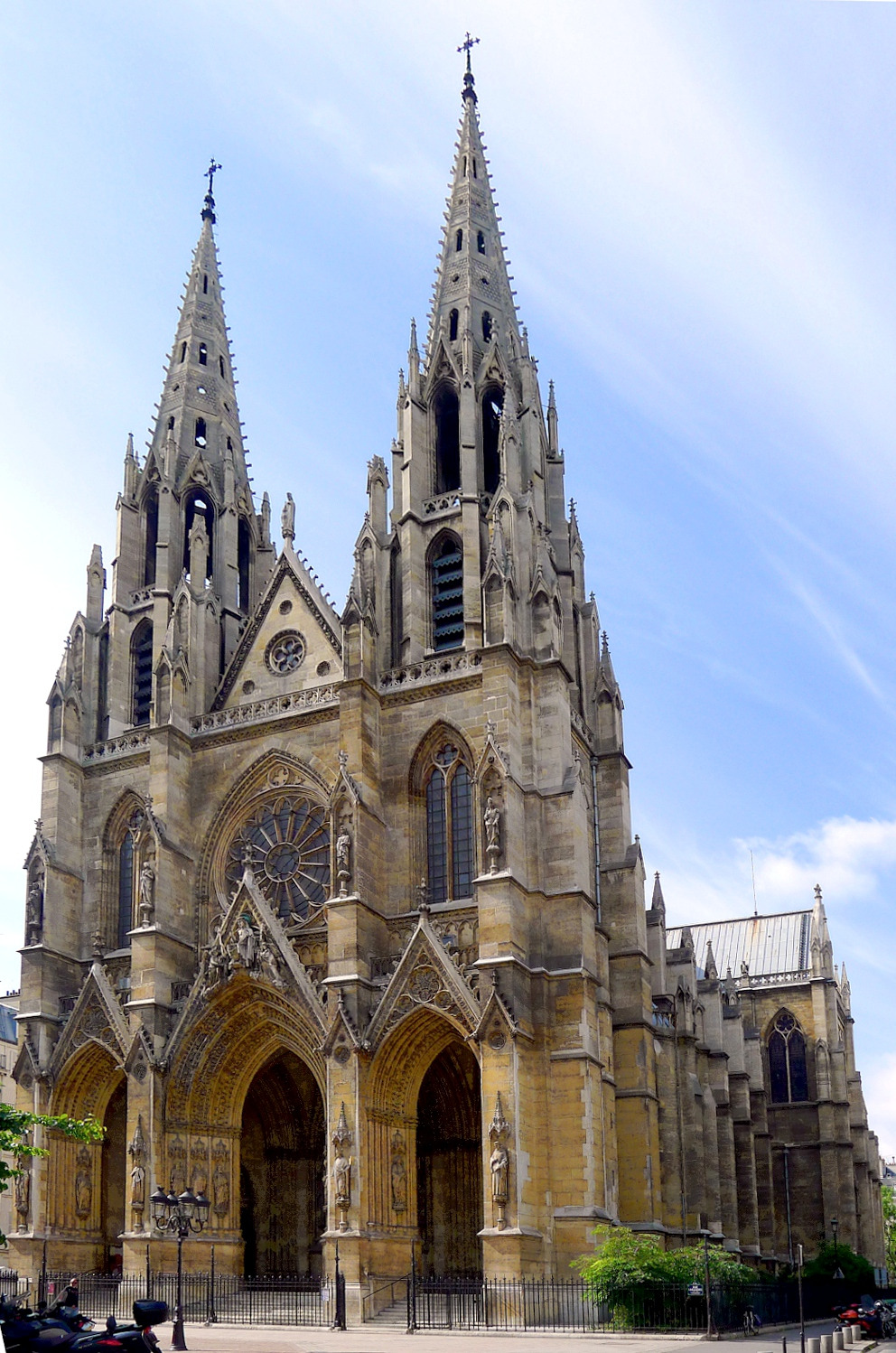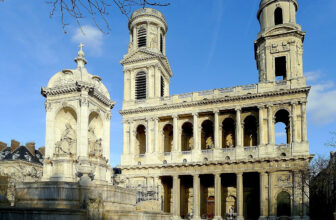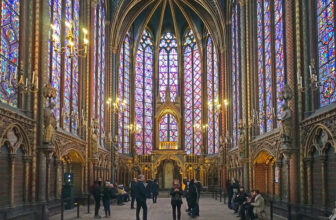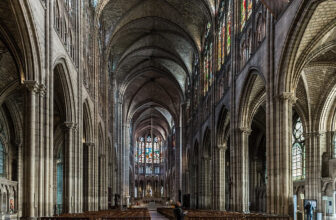
Why is the Basilica of Saint Clotilde Paris famous?
The Basilica of Saint Clotilde, located in the heart of Paris, stands as one of the most remarkable and historically rich landmarks of the city. Known for its stunning neo-Gothic architecture and profound spiritual significance, this iconic basilica attracts countless visitors every year. But why is the Basilica of Saint Clotilde so famous? To fully understand its fame, one must delve into its historical, architectural, cultural, and spiritual dimensions.
Historical Significance
The Basilica of Saint Clotilde is named after Saint Clotilde, the wife of King Clovis I, who was instrumental in the Christianization of France. Her influence led to the conversion of King Clovis and, subsequently, the Franks to Christianity in the late 5th and early 6th centuries. This pivotal moment in French history established Christianity as the dominant religion of the region, shaping the cultural and spiritual landscape of France for centuries to come.
Construction of the basilica began in 1846, during a period when France was experiencing a resurgence of interest in Gothic art and architecture. This movement, known as the Gothic Revival, sought to revive the grandeur of medieval ecclesiastical structures. The Basilica of Saint Clotilde became a symbol of this revival, showcasing a renewed appreciation for the artistry and craftsmanship of earlier centuries. The church was completed in 1857 and consecrated the same year, making it one of the first neo-Gothic churches in Paris.
Architectural Masterpiece
One of the key reasons for the fame of the Basilica of Saint Clotilde is its architectural brilliance. Designed by the German architect Franz Christian Gau and later completed by French architect Théodore Ballu, the basilica is a masterpiece of neo-Gothic design. Its twin spires, which rise to a height of 69 meters, dominate the Parisian skyline and serve as a beacon for both the faithful and lovers of art and history.
The façade of the basilica is adorned with intricate carvings and statues that depict various saints, biblical scenes, and Christian symbols. The meticulous attention to detail is a testament to the skill and dedication of the artisans who worked on the structure. The rose window, a hallmark of Gothic architecture, is particularly striking, featuring vibrant stained glass that illuminates the interior with a kaleidoscope of colors.
Inside, the basilica’s grandeur continues with soaring vaulted ceilings, pointed arches, and richly decorated chapels. The altar, made of white marble, serves as the focal point of the sanctuary and is complemented by a series of ornate sculptures and frescoes. The organ, built by Aristide Cavaillé-Coll, is another highlight of the basilica. Known for its exceptional sound quality, the organ has hosted numerous renowned musicians and continues to play a central role in liturgical celebrations and concerts.
Cultural and Artistic Importance
Beyond its architectural splendor, the Basilica of Saint Clotilde has played a significant role in Paris’s cultural and artistic life. The basilica has long been a center for sacred music, thanks to its world-class organ and acoustics. Composers such as César Franck, who served as the organist at the basilica for many years, have left an indelible mark on the history of Western music. Franck’s compositions, many of which were inspired by his time at Saint Clotilde, continue to be celebrated and performed around the world.
The basilica also serves as a venue for art exhibitions, lectures, and community events, making it a vibrant hub of cultural activity. Its serene ambiance and inspiring beauty have attracted countless artists, writers, and thinkers over the years, many of whom have drawn inspiration from its timeless elegance.
Spiritual Significance
As a place of worship, the Basilica of Saint Clotilde holds deep spiritual significance for both Parisians and visitors from around the globe. The church is a symbol of faith, hope, and community, providing a sanctuary for prayer, reflection, and spiritual renewal. Its dedication to Saint Clotilde, a figure revered for her piety and devotion, adds an additional layer of spiritual resonance.
Throughout its history, the basilica has been the site of numerous religious ceremonies, including weddings, baptisms, and ordinations. Its liturgical calendar is filled with masses, vespers, and other devotional practices that draw participants from diverse backgrounds. The basilica’s commitment to fostering a sense of inclusivity and unity makes it a cherished spiritual home for many.
Connection to Parisian Identity
The Basilica of Saint Clotilde is more than just a church; it is a symbol of Parisian identity and heritage. Situated in the 7th arrondissement, a district known for its elegance and historical landmarks, the basilica contributes to the rich tapestry of Paris’s architectural and cultural landscape. Its proximity to other iconic sites, such as the Eiffel Tower and the Musée d’Orsay, makes it a must-visit destination for tourists exploring the city.
For Parisians, the basilica represents a connection to their city’s storied past and enduring traditions. Its bells, which ring out across the neighborhood, serve as a reminder of the passage of time and the continuity of faith and community. The basilica’s role as a gathering place for both religious and secular events underscores its importance as a unifying force in the city.
Preservation and Legacy
Over the years, efforts have been made to preserve and restore the Basilica of Saint Clotilde, ensuring that future generations can continue to appreciate its beauty and significance. Restoration projects have focused on maintaining the integrity of its architecture, cleaning its façade, and preserving its priceless artworks and stained glass windows. These efforts reflect a broader commitment to safeguarding Paris’s cultural and historical heritage.
The legacy of the Basilica of Saint Clotilde extends far beyond its physical structure. It stands as a testament to the power of faith, art, and community to transcend time and inspire generations. Whether one visits the basilica to admire its architectural splendor, attend a concert, or seek spiritual solace, the experience is invariably profound and memorable.
The Basilica of Saint Clotilde’s fame is rooted in its multifaceted significance as a historical landmark, architectural masterpiece, cultural hub, and spiritual sanctuary. Its neo-Gothic beauty, rich history, and enduring legacy make it a beacon of inspiration and a cherished part of Paris’s identity. For those who visit, the basilica offers not only a glimpse into the past but also a timeless reminder of the values and ideals that continue to unite and uplift humanity. Whether you are an art lover, history enthusiast, or spiritual seeker, the Basilica of Saint Clotilde promises an experience that is as enlightening as it is unforgettable.





